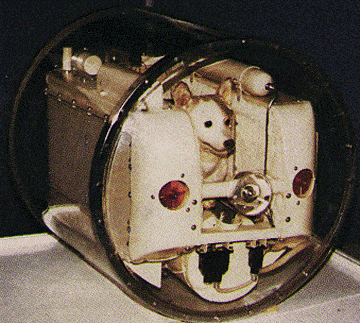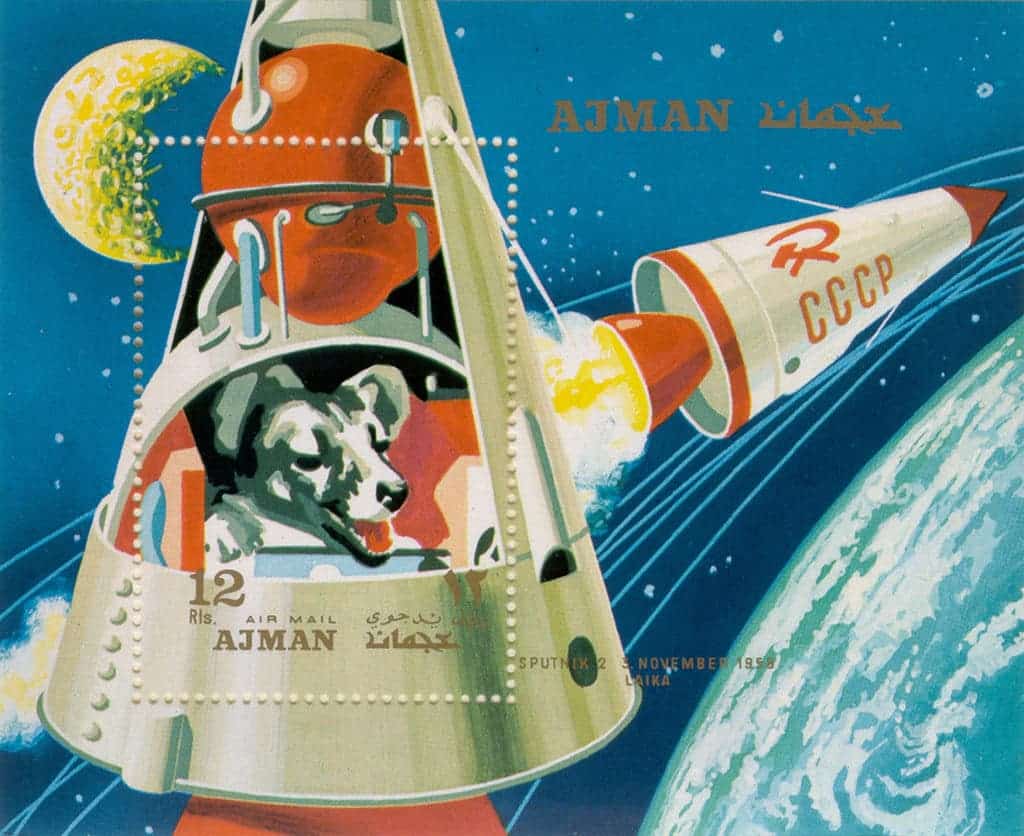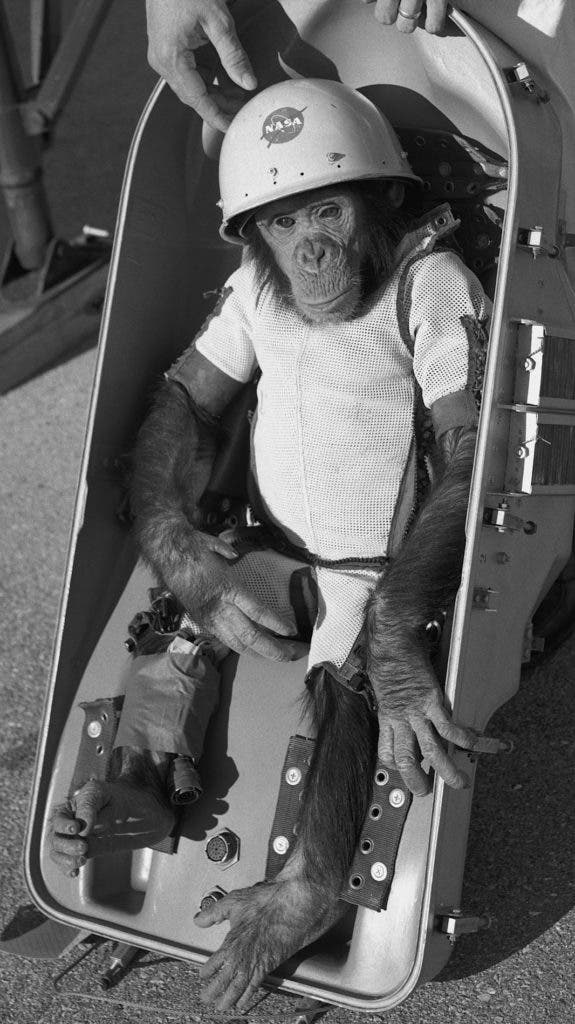Some of the first space explorers were dogs. In the 1950s and 1960s, the Soviet space program used dogs to test their spacecraft on their race to the moon with the USA. Animals were first sent into space to test equipment and see which stresses and pressures space travel bring in order to make it safe for humans. The effects of weightlessness on living organisms was not yet understood.
Training
The Soviets used dogs because their scientists believed that dogs were comfortable with periods of inactivity. Stray dogs were selected because they were viewed as more tolerant to stresses. Only females were used because of their temperament and the design of the dog space suit. More than 20 dogs were sent up in total, which several failures.

The dogs were trained to prepare for their space flights. They were confined in increasingly smaller boxes for up to 20 days at a time to prepare them for the space module that they would stay in for the space flight. They also were trained to stand still for a long time, wear space suits (the dogs wore pressure suits with acrylic glass bubble helmets), and stimulate a launch and ride. They were fed a nutrient-packed protein gel; it had a lot of fiber to help them excrete during space travel. Even so, more than half of the dogs that returned had constipation or gallstone problems.
First tests
The first test flights with dogs were conducted between 1951 and 1956 using R-1 rockets. The 15 flights were suborbital and reached about 100 km (60 miles) above sea level. The first big step for dogkind was made by the dogs Dezik and Tsygan; they flew safely to 110 km on July 22nd, 1951. Unfortunately, a few days later Dezik and another dog, Lisa, perished in a mission when their capsule’s parachute did not open when they were headed back towards earth. However, the other flights and landings during this time were successful. Later in 1951, two of the dogs that were supposed to launch ran away before their big moment, meaning that two substitutes had to launch instead. They were recovered safely from space.
Next, from 1957 to 1960, 11 flights were made even higher up with R-2A rockets. These flights brought the Russians a step closer to space explorations, achieving a height of 200 km (124 miles). Three flights even made it all the way to 450 km (280 miles) with R-5A rockets in 1958. For these flights, the dogs were shuttled in a pressured cabin.
Into orbit
On November 3rd, 1957, the first animal went into orbit; the now-famous Laika was sent on the Sputnik-2 mission. She was a young, mostly Siberian husky, mutt found on the streets of Moscow. She died on the mission, but her death was, sadly, anticipated because a re-entry strategy could not be sorted out in time for the launch. However, she only survived for between five and seven hours, while the scientists had predicted that she would survive the full ten days. At the time, the Soviet Union had claimed that her death had been painless due to running out of oxygen. However, it has come to light recently that she likely died as a result of overheating and stress. The overheating may have been caused by failures during deployment. The spacecraft was in orbit for 162 days before it fell back to Earth. Because of this sad occurrence, all future spacecraft was designed to be recoverable.

The next year in August, two dogs, a grey rabbit, 42 mice, 2 rats, flies, and several plants and fungi, were launched in space and spent a day in orbit before returning safely to Earth. In November, two more dogs were sent to space with a contingent of test plants and creatures and also spent a day together in space. They weren’t so lucky and all died during re-entry due to an error. The spacecraft then had to be destroyed so Soviet enemies wouldn’t find it.
In March 1961, two missions launched dogs with cosmonaut dummies to prepare for Yuri Gagarin who became the first man in space on April 12th, 1961. On February 22nd, 1966, the dogs Veterok and Ugolyok spent 22 days in orbit. Humans only broke this record in 1971, but it still the longest spaceflight made by dogs.
Animals in space

Dogs were not the only animals sent to space. While the U.S.S.R. was testing rockets with dogs, the USA was mostly using monkeys. The first mammal in space was Albert II, a rhesus monkey, which died from the impact of re-entry. Fruit flies, tortoises, and mice are some other animals that were also cosmonauts. Although it is not common practice to use animals in space tests now, some animals are sent to space in experiments to see how the lack of gravity affects them, nematodes, cockroaches, ants, fish, and tardigrades. Though they wouldn’t stand up to today’s ethical standards, the Soviet space dogs did contribute a lot to the advancement of space travel.






